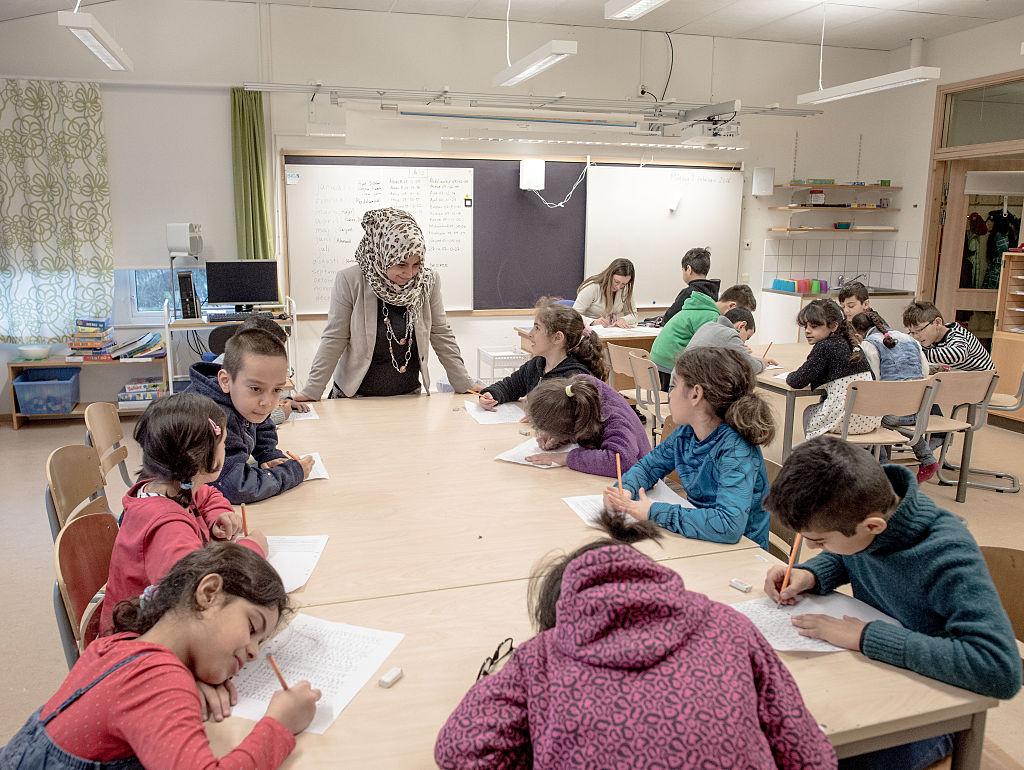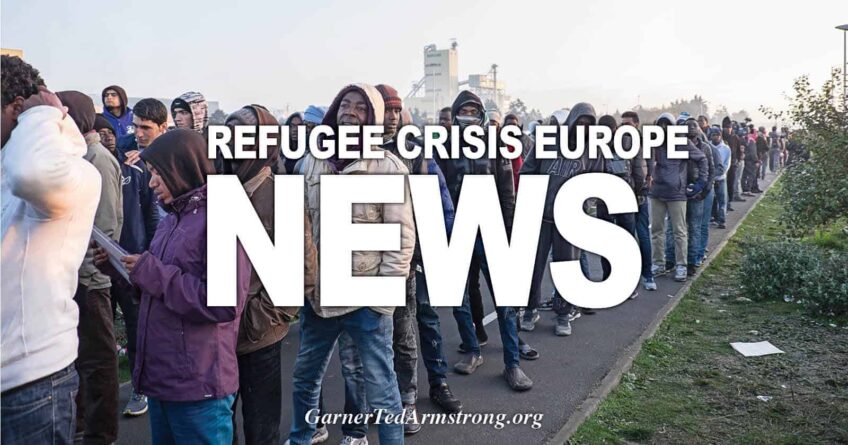Authored by Nima Gholam Ali Pour via The Gatestone Institute,
The Swedish welfare state has often been praised by the left in the United States. After the migration crisis of 2015, however, when Sweden was flooded by Syrian refugee claimants, Sweden is now facing a welfare crisis that threatens the entire Swedish welfare state model.

Sweden had 9.7 million inhabitants in 2015 before it received 162,000 asylum seekers. 70% of those asylum seekers came from Syria, Afghanistan, and Iraq. 70% of those asylum seekers were also men. The migration crisis created an unsustainable financial and social situation that caused the Swedish political establishment to rethink its stance on asylum migration, which, until then, had been extremely liberal.
Asylum migration has continued, nevertheless. Between 2016 and 2018, more than 70,000 additional migrants have applied for asylum in Sweden, and more than 105,000 asylum migrants have been granted asylum.
There is a demographic impact from migration that affects Sweden’s national and cultural identity, as well as the crushing economic impact on Sweden’s welfare state.
The demographic impact can be seen in cities such as Sweden’s third-largest city, Malmö, where people of foreign background (foreign-born or both parents born abroad) have increased from 31.9% of the population in 2002 to 45.9% of the population in 2018. There are already three Swedish municipalities where the majority of the population has a foreign background: Botkyrka, Södertälje, and Haparanda. The question then becomes how to integrate foreigners if the majority of the people in a city are of a foreign background. 51% of the elementary school students in Malmö are either foreign-born or both of whose parents are foreign-born. Within a generation, Sweden’s third-largest city will have a population in which the majority of people are of foreign background. How will integrating immigrants take place then, and which group will be integrated into which?
Integrating migrants into Swedish society has been a failure, a situation that both experts and politicians agree on. In March 2018, 58% of registered unemployed persons were born outside Sweden, even though the group’s share of the population is only 23%. In 2018, the unemployment rate for foreign-born Swedes was 15.4%, while unemployment for Swedes born in Sweden was 3.8%.
The EBO Law (Lagen om eget boende – “Independent Living Act”) permits asylum seekers to settle anywhere in the country. Migrants often settle in areas where other migrants already have settled, partly because of the low housing prices in those areas and partly because it is easier for migrants to network there. This process both reinforces segregation and creates migrant enclaves in Sweden.
A large influx of migrants combined with a failed integration policy has created cultural consequences in which Swedish culture is both undergoing rapid change and having its identity challenged. In many areas where migrants are in the majority, there is no way to maintain Swedish culture because the population has a culture distinctly different from Sweden’s culture. This results, among other things, in changes in the language and in which holidays are publicly observed.
Several established Swedish media outlets published articles in June glorifying Eid-al-fitr, the holiday that ends the Islamic fasting month of Ramadan. Well-known companies in Sweden, such as Arla Foods, ICA and COOP, published recipes on their websites for the holiday. Several voices have already suggested that Eid-al-fitr, a Muslim holiday, should be a national holiday in Sweden. These voices have come from the Social Democrats and the Church of Sweden, two institutions that have great influence in Swedish society. Even though Eid-al-fitr has not become a national holiday, yet, several municipalities choose to celebrate it.
As long as Sweden has existed as a nation, the bond to its ancestral neighbor, Finland, has been strong and Finnish has been the second most popular language here. In 2018, the linguist Mikael Parkvall noted that Arabic is now the second most popular language in Sweden. At the same time, many children born in Sweden learn Swedish so poorly that they cannot speak it properly because there is not enough Swedish spoken in some preschools and grade schools. This change is unfolding at a rapid pace.
It is not just Swedish society that will look radically different within a decade. The Swedish welfare state, which has been the hallmark of the Swedish state known around the world, is also changing or possibly even being phased out.
The calculations underpinning Sweden’s welfare state are based on the assumption of a majority of adults employed full-time, who pay income tax to the state. What the state receives needs to be greater than what it pays out in the form of various welfare benefits and transfer payments. When a large number of people who receive welfare benefits cannot find employment or are not willing to work, there is a crisis. This is exactly what has happened in Sweden with its liberal immigration policy.
An example highlighted in Swedish media is Filipstad, a municipality with more than 10,000 inhabitants. There, the proportion of residents with a foreign background has increased from 8.5 % in 2002 to 22.7 % in 2018. Between 2012 and 2018, the domestic-born group decreased by 640 individuals, while the foreign-born group increased by 963. Those who move out of Filipstad are Swedish-born and of working age. At the same time, Filipstad’s City Manager, Claes Hultgren, is concerned that the newly arrived migrants do not have the necessary skills to enter the labor market. The consequence for municipalities such as Filipstad is that they then must make cutbacks in the welfare services that the municipality has a responsibility to supply.
Filipstad is not the only municipality to suffer from cutbacks. According to a report from the association Sweden’s Municipalities and Regions (SKR), in 2023, there will be a deficit of 43 billion Swedish kronor (approximately $4.6 billion) in municipal and regional operations if costs increase in line with the population growth and the state does not add more resources than already planned.
The Social Democratic municipal commissioner in Strömsund, a Swedish municipality with 11,699 inhabitants, warned:
“All costs are borne by the municipalities. We have never had such low unemployment in the municipality among native-born, yet, we are on our knees, and the explanation is that we also never had such high unemployment among foreign-born. And they end up in welfare, which in practice is now, for many, life-long support.”
Charlotta Mellander, Professor of Economics at Jönköping International Business School, noted the following about the municipalities’ economic crisis:
“This is not something that happened overnight, but the municipalities’ finances have been eroded for a long time. But something that has affected the situation is the refugee reception in 2015, where, from the beginning, the municipalities that received the most had poor conditions in terms of a labor market and integration. And that has made the situation even tougher.”
At the beginning of this new decade, because of excessive migration and failed integration policies, Sweden faces radical cultural and economic changes that will fundamentally change the country.
There is ongoing Islamization in parts of Sweden and how much this Islamization will affect Swedish society is something that is influenced by the political decisions that will be made during the 2020s.
Will asylum immigration to Sweden from Muslim countries continue? Will Swedish authorities continue to support Islamic culture with tax funds? Will the immigrants adopt Swedish culture, or will the failed integration approach continue and the Swedes increasingly adopt the Islamic culture?
There are major conflicts between these two cultures, so the expansion of the Islamic culture in Sweden will doubtless create unrest of various kinds. Today, there are more contradictions between Islamic culture and Swedish culture than commonalities. Segregation is strong and mosques have been involved in scandals several times due to cultural conflicts between Islam and Swedish values.
The new decade will, therefore, be both unstable and decisive for Sweden, and contain major political, cultural and economic changes inescapably taking place.
Source: https://www.zerohedge.com/geopolitical/sweden-and-its-welfare-state-crisis
[Disclaimer]









